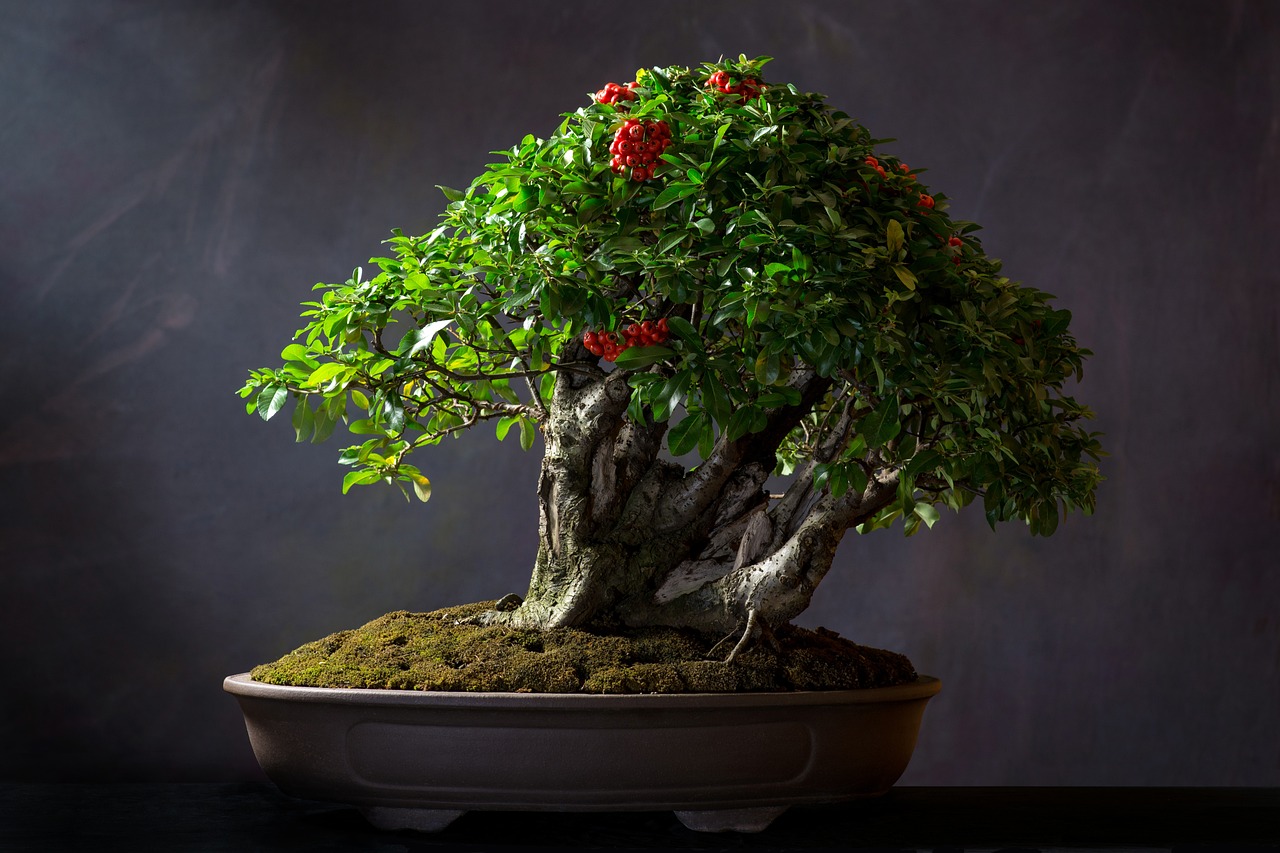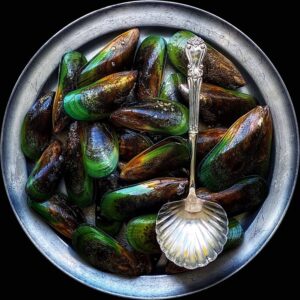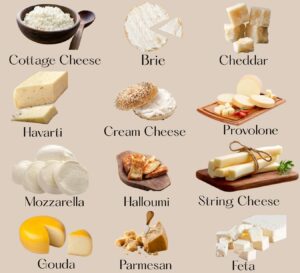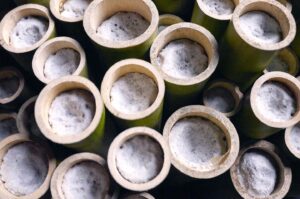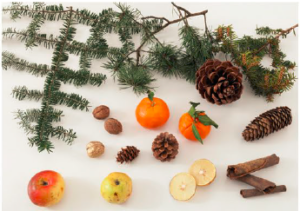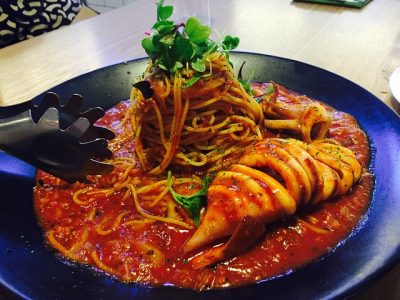 Pin
Pin Image by Jungyeon Min from Pixabay
Now, you might wonder, as Alice once did before tumbling down that rabbit hole, what exactly makes a noodle a noodle? Is it the way it curls and coils like a question mark in your bowl? Or perhaps it’s the delightful manner in which it refuses to stay on your fork, sliding about like a mischievous little serpent? The truth, dear reader, is far more enchanting than you might suppose.
You see, noodles around the world are rather like different characters in a grand story, each with its own peculiar personality and backstory. Some are long and thin, quite serious about their appearance. Others arrive plump and playful, ready to soak up every bit of flavor they encounter. What begins as simple flour and water somehow transforms, through a bit of kitchen alchemy, into comfort food that speaks a thousand different languages. From the moment someone in ancient China decided to stretch dough into strands (historians still quarrel about the exact date, as historians tend to do), noodles began their peculiar journey across mountains, oceans, and centuries.
They shape-shifted to fit each new home they found, adopting local spices here, a different cooking method there, until they became something altogether new yet somehow still familiar. Shall we follow these slippery characters on their global adventure? Do say yes, because twenty fascinating stops await us.
Table of Contents
1. Spaghetti Carbonara – Italy's Creamy Contradiction
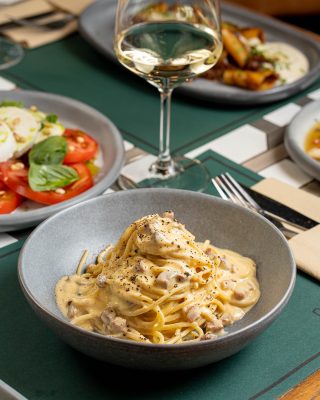 Pin
Pin Photo by Cardinale Athens
Ah, here’s a puzzling dish that causes quite the hullabaloo among Italian grandmothers and food purists alike. Spaghetti Carbonara, you see, is rather like a magic trick performed with eggs, cheese, and pork. The curious part? There’s no cream involved whatsoever, though many imposters would have you believe otherwise. This Roman specialty emerged sometime after World War II, though its exact origins remain as murky as a London fog.
Some say it was named after the charcoal workers (carbonari) who needed hearty meals, while others insist it came about when American soldiers introduced bacon and eggs to Italian cooks. The truth, like the Cheshire Cat, keeps slipping away just when you think you’ve caught it.
The real sorcery happens when you toss piping hot spaghetti with raw eggs and grated Pecorino Romano cheese, creating a silky sauce through nothing but heat and vigorous stirring. Add crispy guanciale (that’s cured pork cheek, not bacon, mind you), a generous grinding of black pepper, and you’ve got a dish that’s simultaneously simple and sophisticated. The recipe requires only five ingredients, yet getting it right demands the timing of the White Rabbit and the patience of a saint. Too much heat and your eggs scramble into a rather unfortunate mess. Too little and you’re left with a cold, gloopy situation. But when everything aligns just so, you’ll have created something that tastes like pure comfort wrapped in golden strands.
2. Pad Thai – Thailand's Sweet and Tangy Balancing Act
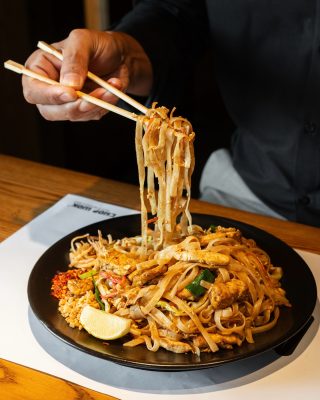 Pin
Pin Photo by Chop Chop Wok
Now we find ourselves transported to the bustling streets of Bangkok, where a most interesting historical twist occurred. Pad Thai, which you might assume is as ancient as Thai culture itself, actually became Thailand’s national dish through government decree in the 1930s. Rather like declaring by royal proclamation that everyone must suddenly adore a particular food, Prime Minister Plaek Phibunsongkhram promoted this dish as part of a nationalist campaign to unify the country and reduce rice consumption during economic hardship.
The noodles themselves, flat rice ribbons called sen lek, had likely arrived from China centuries earlier, but the Thais transformed them into something entirely their own through an ingenious combination of flavors that dance together like acrobats on a tightrope.
What makes Pad Thai so captivating is its remarkable ability to balance four distinct flavors all at once: sweet from palm sugar, sour from tamarind paste, salty from fish sauce, and a gentle heat from chili powder. Stir-fried over blazing heat with eggs, tofu or shrimp, bean sprouts, and garlic chives, the dish comes together in mere minutes, though mastering that perfect char without burning requires practice. The finishing touches are what truly elevate it: crushed peanuts for crunch, a squeeze of lime for brightness, and perhaps a sprinkle of dried chili flakes if you’re feeling adventurous. Street vendors in Thailand have been perfecting their versions for generations, each claiming their particular method produces the most authentic result. The beauty lies in how this relatively young dish has become so deeply woven into Thai identity that most people can hardly remember it was once a political invention rather than a grandmother’s treasured recipe.
3. Ramen – Japan's Soul in a Bowl
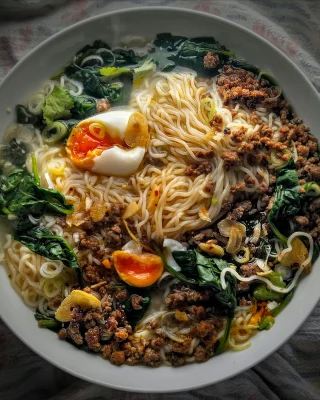 Pin
Pin Photo by Jenny G
Here’s where things get delightfully complicated, rather like trying to count all the stars in the sky. Ramen, despite being so thoroughly Japanese in spirit, actually started its journey in China before crossing the sea and undergoing a complete transformation. The Japanese took those Chinese wheat noodles and created an entire universe around them, with regional styles so distinct that ramen enthusiasts can identify a bowl’s hometown by a single slurp.
Tokyo prefers a soy sauce base, Sapporo champions miso, while Hakata insists on cloudy pork bone broth that’s been simmered for so many hours it turns as white as milk. Each city guards its style with the ferocity of a dragon protecting treasure, and woe betide anyone who suggests one is superior to another.
The curious thing about ramen is how it evolved from humble working-class food into a cultural phenomenon that inspires pilgrimages and passionate debates. The broth alone can take anywhere from twelve to eighteen hours to prepare properly, coaxing every molecule of flavor from pork bones, chicken carcasses, and aromatics until you’ve got something that tastes like pure umami magic. Then come the toppings, which follow their own peculiar rules: a soft-boiled egg with a jammy yolk, slices of tender chashu pork, bamboo shoots, nori seaweed, and scallions arranged just so. The noodles themselves must have the right amount of chew, that springy texture the Japanese call koshi. Instant ramen, invented in 1958 by Momofuku Ando, became its own phenomenon and saved countless university students from starvation, though purists might argue it’s an entirely different creature altogether from the real thing served in specialty shops.
4. Pho – Vietnam's Morning Meditation
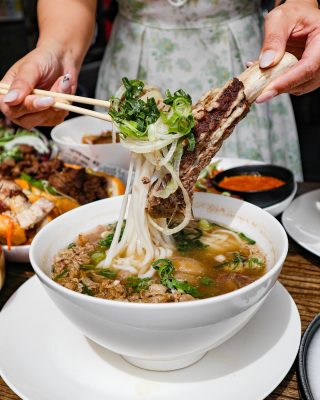 Pin
Pin Photo by North Strathfield
If ever there was a dish that could teach you about patience and layering flavors, pho would be your wise instructor. This Vietnamese beef noodle soup, pronounced “fuh” (not “foe,” as many newcomers mistakenly say), represents one of those culinary achievements where simplicity and complexity shake hands and become friends. The story goes that pho emerged in northern Vietnam during French colonial rule in the late 1800s, when Vietnamese cooks began experimenting with beef bones left over from French kitchens.
Before this time, the Vietnamese rarely ate beef, preferring pork and chicken, but colonialism has its way of mixing cultures together like ingredients in a pot, sometimes creating something unexpectedly wonderful.
The broth is where all the magic truly happens, and this is where your patience will be tested most severely. You must char onions and ginger directly over flame until they’re blackened and fragrant, then simmer beef bones for at least twelve hours with star anise, cinnamon sticks, coriander seeds, and cardamom pods. The result should be crystal clear yet deeply flavorful, a feat that requires skimming impurities from the surface repeatedly, much like how a sculptor chips away everything that isn’t the statue. The flat rice noodles, called bánh phở, get briefly blanched and placed in a bowl with paper-thin slices of raw beef, which cook instantly when the boiling broth pours over them. Then comes the fun part: a plate of fresh herbs arrives at your table, including Thai basil, cilantro, lime wedges, bean sprouts, and sliced chilies. You become the final chef, customizing your bowl according to your particular fancy.
5. Fettuccine Alfredo – Rome's Buttery Love Letter
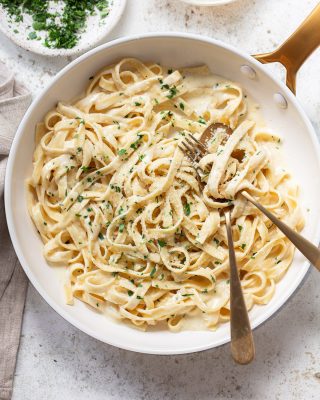 Pin
Pin Photo by Karen Tedesco
Now here’s a dish that started as one man’s desperate attempt to help his pregnant wife regain her appetite, which sounds rather like the beginning of a fairy tale, doesn’t it? In 1908, a Roman restaurateur named Alfredo di Lelio created this deceptively simple dish using only three ingredients: fresh fettuccine, butter, and Parmigiano-Reggiano cheese. His wife, Ines, was struggling with nausea during pregnancy and couldn’t bear to eat anything, so Alfredo prepared these wide, flat noodles tossed with an extravagant amount of butter and cheese, hoping the richness would entice her.
It worked splendidly, and when he later added the dish to his restaurant menu, it became so famous that Hollywood stars Mary Pickford and Douglas Fairbanks presented him with golden utensils for mixing it tableside.
The curious paradox of Fettuccine Alfredo is that it’s wildly popular in America yet barely exists in Italy outside of tourist traps. Italians find the idea rather baffling, since adding cream to pasta with butter and cheese seems unnecessary, like gilding a lily that’s already perfectly golden. The authentic version relies entirely on the starch from freshly cooked pasta water mixing with cold butter and finely grated cheese to create a creamy emulsion through vigorous tossing and the residual heat of the noodles. The fettuccine itself should be fresh, not dried, with that tender bite that comes from eggs mixed into the dough. When done properly, each strand becomes coated in a silky sauce that clings without being heavy, though this requires a certain finesse with timing and temperature. Too much fiddling and your sauce breaks into a greasy puddle, but when the stars align, you’ll understand why a lovesick husband created something that transcended its humble origins.
6. Lo Mein – China's Tossed Treasure
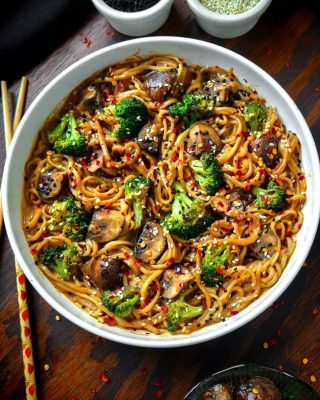 Pin
Pin Photo by Vegan Bowl
Let’s wander back to where this entire noodle odyssey began, shall we? China’s relationship with noodles stretches back over four thousand years, making it rather like the ancient grandmother of all the noodle dishes we’ve encountered so far. Lo mein, whose name translates quite literally to “stirred noodles,” represents one of the most straightforward yet satisfying expressions of Chinese noodle cookery.
Unlike its crispy cousin chow mein, which gets fried until crunchy, lo mein noodles are boiled until tender, then tossed with vegetables, protein, and sauce in a way that allows each ingredient to maintain its individual character while contributing to the harmonious whole. The dish likely originated in northern China, where wheat grows abundantly and noodle-making became an art form passed down through countless generations.
The secret to proper lo mein lies in understanding the concept of wok hei, that elusive “breath of the wok” that Chinese cooks chase like prospectors seeking gold. You need screaming hot temperatures and quick movements, tossing everything together so rapidly that the ingredients sear and char slightly while staying crisp and fresh. The noodles themselves should be thick and round, with enough body to stand up to vigorous stirring without turning into mush. A proper sauce combines soy sauce, oyster sauce, sesame oil, and perhaps a touch of sugar, creating a glossy coating that’s savory and slightly sweet without drowning the other elements. Common additions include bok choy, carrots, mushrooms, and either chicken, beef, shrimp, or tofu, though really you could toss in whatever strikes your fancy. The whole affair comes together in less time than it takes to set the table, which explains why lo mein has become such a beloved takeout staple, even if restaurant versions sometimes lack that magical wok breath that home cooking over a proper flame can achieve.
7. Soba – Japan's Buckwheat Philosophy
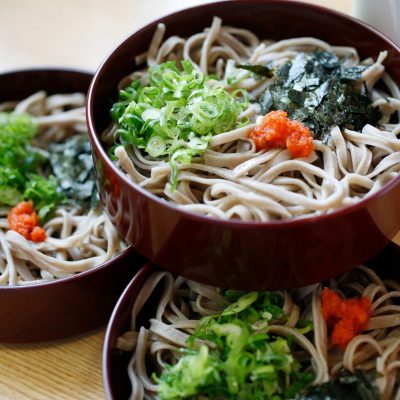 Pin
Pin Photo by San’in Shimane
Here we encounter something rather philosophically interesting, because soba noodles aren’t quite what they first appear to be. While most noodles pledge their allegiance to wheat flour, soba breaks ranks and marches to the beat of buckwheat, which isn’t actually wheat at all but rather a seed related to rhubarb. The Japanese have been crafting these thin, brownish noodles since the Edo period, roughly four hundred years ago, and they’ve elevated soba-making to an art form that requires years of apprenticeship to master.
Traditional soba masters spend entire lifetimes perfecting the ratio of buckwheat to wheat flour, the temperature of the water, and the exact pressure needed when cutting the dough into perfectly uniform strands. There’s something meditative about watching a soba chef work, their movements precise and unhurried, as if they’re performing an ancient ritual rather than simply preparing lunch.
Eating soba on New Year’s Eve, called toshikoshi soba, symbolizes letting go of the past year’s hardships, since the noodles are easier to cut than other varieties, representing a clean break with misfortune. You can enjoy soba either hot in a delicate dashi broth made from kombu seaweed and bonito flakes, or cold on a bamboo mat called a zaru, where you dip each mouthful into a sauce made from soy, mirin, and dashi. The cold version, especially popular during summer, reveals the noodles’ nutty flavor most clearly, though you must slurp them properly and enthusiastically, as silence while eating soba is considered rather rude. Some specialty shops serve juwari soba, made entirely from buckwheat with no wheat binder at all, which creates such a delicate noodle that it practically dissolves on your tongue like edible poetry.
8. Laksa – Malaysia's Spicy Coconut Dream
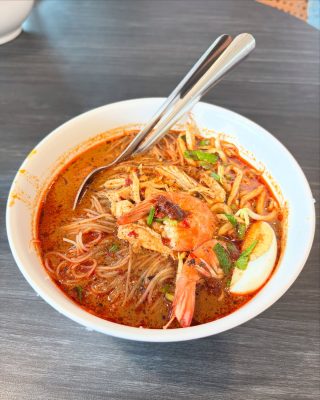 Pin
Pin Photo by Siauling Merina Aprillia
Now we’ve stumbled upon a dish that sparks debates more heated than the chili paste within it, because asking which laksa is the “real” laksa is rather like asking whether Alice’s adventures happened above ground or below. Malaysia and Singapore both claim ownership of this spicy, coconut-based noodle soup, and within each country, different regions insist their version is the only authentic one. The two main camps are Curry Laksa, which swims in a rich, turmeric-golden coconut broth, and Asam Laksa, which takes a sharply sour, tamarind-based direction that tastes nothing like its creamy cousin.
This split personality reflects the dish’s heritage as a Peranakan creation, born from the marriage of Chinese immigrants and local Malay communities centuries ago, blending culinary traditions the way a river blends with the sea.
The beauty of Curry Laksa lies in its layered complexity, which requires building flavors in stages much like constructing a cathedral one stone at a time. You begin by grinding a rempah, a spice paste that typically includes dried chilies, shallots, garlic, lemongrass, galangal, candlenuts, and shrimp paste, pounding them together until they release their aromatic oils. This paste gets fried in oil until it becomes deeply fragrant and the raw edges soften into something mellower and rounder. Then comes coconut milk, stock, and the magic ingredient, laksa leaves, which provide a slightly minty, citrusy note that ties everything together. The noodles themselves vary by preference, some using thick rice noodles while others prefer thin rice vermicelli or even yellow wheat noodles. Toppings transform the bowl into a complete meal with fried tofu puffs that soak up broth like little sponges, prawns, chicken, cockles, bean sprouts, and a dollop of sambal if you’re feeling brave. Each spoonful delivers different sensations, creamy and spicy and tangy all at once, proving that sometimes the best things emerge when cultures collide and create something entirely new.
9. Udon – Japan's Thick and Chewy Comfort
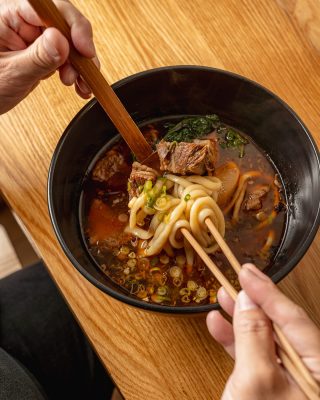 Pin
Pin Photo by RakuNYC
If ramen is Japan’s sophisticated older sibling who traveled the world and came back worldly, then udon would be the younger one who stayed home, perfectly content being exactly what it’s always been. These thick wheat noodles, sometimes as wide as a shoelace and gloriously slippery, have been comforting Japanese souls for over a thousand years with their unpretentious charm. The story goes that a Buddhist priest named Kukai brought the technique back from China during the Tang Dynasty, though like most ancient food origins, the truth has become rather cloudy with time.
What remains clear is that udon has stayed remarkably consistent throughout the centuries, resisting the urge to reinvent itself the way other noodles have, and perhaps that stubborn simplicity is precisely what makes it so beloved.
The magic of udon lies entirely in its texture, that satisfying chewiness the Japanese call koshi, which requires kneading the dough so thoroughly that your arms might consider filing a complaint. Traditional makers actually step on the dough, wrapped carefully in cloth, using their body weight to develop the gluten properly, which sounds rather peculiar until you taste the results. The noodles can be served hot in a light dashi broth with nothing more than sliced scallions and a piece of fried tofu, or cold during summer with a dipping sauce on the side. Kitsune udon, topped with sweet simmered aburaage tofu pouches, remains a popular choice, while tempura udon arrives crowned with crispy battered shrimp or vegetables. Some regions prefer their broth darker and more strongly flavored, while others keep it pale and delicate, but everywhere you go, udon maintains that same comforting presence, like a warm hug on a cold day that asks nothing of you except to slow down and enjoy each slippery, satisfying bite.
10. Spätzle – Germany's Dumpling-Noodle Hybrid
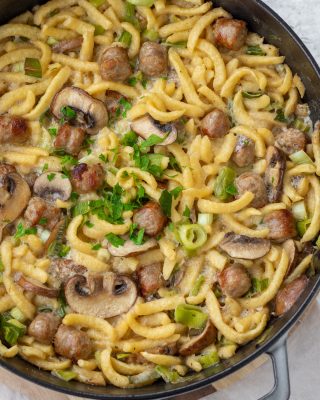 Pin
Pin Photo by Claudia Koll
Here’s where we encounter a most delightful identity crisis in noodle form, because spätzle occupies that curious territory between dumpling and noodle, refusing to commit fully to either category. The name itself means “little sparrows” in Swabian dialect, supposedly because the irregular drops of batter resembled small birds when they were first created in the kitchens of southern Germany and Austria centuries ago. Unlike most noodles that begin as rolled dough cut into shapes, spätzle starts as a soft, almost pancake-like batter made from eggs, flour, and just enough liquid to create something that’s neither too thick nor too runny.
Getting this consistency right is rather like Goldilocks searching for the perfect porridge, and German grandmothers can tell by sight and feel alone when the batter has reached its ideal state.
The traditional method of making spätzle involves pressing this batter through a special board with holes, or scraping it off a wooden board directly into boiling water using a long knife, which requires a certain fearlessness and coordination. The little irregular noodles bob to the surface when they’re done, taking only a minute or two to cook through, then get scooped out and often finished in butter until they develop golden crispy edges. Käsespätzle, the German answer to macaroni and cheese, layers these noodles with Emmental or Gruyère cheese and crispy fried onions, creating something so rich and comforting it feels like wearing your favorite sweater. They also pair beautifully with hearty stews and roasts, where their slightly chewy texture soaks up gravies and sauces with enthusiasm. What makes spätzle particularly endearing is how it remains thoroughly humble despite being absolutely delicious, never putting on airs or pretending to be anything fancier than honest, satisfying food that’s been bringing families together around Bavarian tables for generations.
11. Bún Bò Huế – Vietnam's Royal Spicy Secret
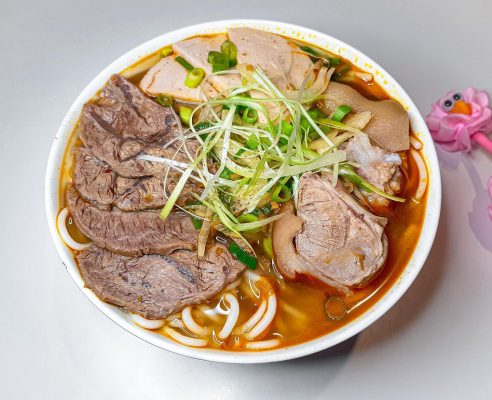 Pin
Pin Photo by MadeByChang
Now we venture into territory that’s decidedly bolder and more assertive than its gentle cousin pho, because Bún Bò Huế hails from the former imperial capital of Huế and carries itself with a certain regal confidence. This beef and pork noodle soup doesn’t whisper politely like pho does, instead announcing its presence with a vibrant red broth that’s both spicy and deeply savory, balanced with a hint of sweetness and that unmistakable funk that comes from fermented shrimp paste.
The dish emerged from the royal kitchens of the Nguyễn Dynasty, where chefs served the emperor and his court, which explains why it possesses such complex layering of flavors, each one carefully orchestrated to complement the others without overwhelming the palate.
The broth requires simmering beef shanks and pork knuckles for hours alongside lemongrass stalks, which infuse everything with their bright, citrusy perfume. What sets this soup apart is the generous addition of chili oil and annatto seeds, which give the liquid its distinctive crimson color and a gentle heat that builds gradually rather than attacking all at once. The noodles here are round and thick, called bún, with a satisfying chew that’s substantial enough to stand up to the robust broth. Traditional toppings include sliced beef shank, cubes of congealed pig’s blood, Vietnamese ham, and sometimes a pig’s knuckle if you’re feeling particularly adventurous. Fresh herbs, banana blossom, cabbage, lime wedges, and extra chili paste arrive on the side, allowing each person to adjust their bowl according to their particular tolerance for heat and funkiness. While pho has conquered the world and become Vietnam’s most famous culinary ambassador, Bún Bò Huế remains something of a hidden treasure, appreciated by those who seek deeper, more complex flavors that reward adventurous eaters willing to embrace its bold personality.
12. Sesame Noodles – China's Cold and Nutty Delight
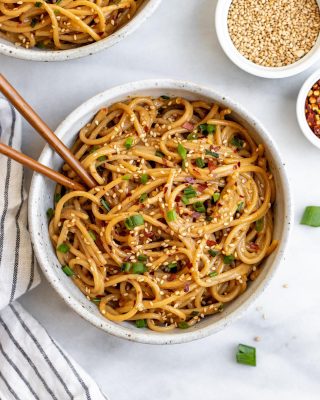 Pin
Pin Photo by Claire Cary
Let’s talk about a dish that solves one of summer’s most pressing problems, which is how to enjoy something satisfying when the weather makes you want to avoid anything hot whatsoever. Chinese sesame noodles, often called ma jiang mian, originated in northern China where sesame seeds grow abundantly and get transformed into a thick, intensely nutty paste called tahini’s more robust cousin. These cold noodles became particularly popular in Sichuan province, where cooks combined the creamy sesame paste with chili oil, creating a dish that’s simultaneously cooling and spicy, which sounds contradictory until you taste how brilliantly the combination works.
The dish traveled to America with Chinese immigrants and became a staple of Chinese-American takeout menus, though restaurant versions often simplify the complex flavors of the original into something sweeter and less nuanced.
The heart of authentic sesame noodles lies in creating a sauce that balances the richness of sesame paste with bright, sharp flavors that prevent it from becoming cloying. You need to thin the paste gradually with warm water while whisking vigorously, because sesame paste behaves rather stubbornly and seizes up if you rush the process, turning into an unworkable lump that refuses to cooperate. Once you’ve achieved a pourable consistency, you add soy sauce for saltiness, black vinegar for tang, a touch of sugar to round everything out, and crucially, some of the starchy water from cooking the noodles, which helps the sauce cling properly. Fresh Chinese wheat noodles work best, cooked until just tender, then shocked in ice water to stop the cooking and maintain that pleasant chew. Julienned cucumbers provide a refreshing crunch, while scallions and toasted sesame seeds sprinkled on top add textural interest. Some versions include shredded chicken or simply remain vegetarian, but either way, the dish tastes best when it’s had time to sit and let all those flavors mingle together like old friends catching up after a long absence.
13. Japchae – Korea's Glass Noodle Celebration
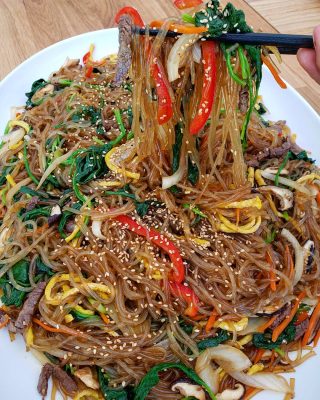 Pin
Pin Photo by Seounkyoung
Here we meet noodles that seem to have been spun from moonlight itself, so translucent and delicate that you can practically see through them when they’re cooked. Japchae, which translates to “mixed vegetables,” has been gracing Korean tables since the Joseon Dynasty, specifically since 1590 when a nobleman named Yi Chung created the dish for King Seonjo during a royal banquet. The king enjoyed it so thoroughly that he promoted Yi Chung on the spot, which must be the most delicious career advancement in culinary history.
Interestingly, the original version contained no noodles at all, just vegetables, but somewhere along the journey through centuries, sweet potato starch noodles called dangmyeon joined the party and became so integral that nobody can quite picture japchae without them anymore.
These glass noodles possess a uniquely slippery, bouncy texture that’s nothing like wheat or rice noodles, almost springy in the way they resist your teeth before yielding. The noodles get boiled until tender, then tossed with sesame oil to prevent sticking while you prepare everything else, because japchae requires more chopping and prep work than most noodle dishes, each vegetable cooked separately to maintain its distinct character. Spinach gets blanched quickly and squeezed dry, carrots and onions are julienned and sautéed until just tender, while shiitake mushrooms add their earthy depth. Thin strips of beef, marinated in soy sauce, sugar, garlic, and sesame oil, provide savory richness that anchors all those vegetables. Everything comes together in a final toss with more soy sauce and sesame oil, creating a dish that’s both elegant and hearty, often served at celebrations and special occasions. The finished japchae glistens invitingly, each ingredient visible and contributing its own voice to the harmonious whole, proving that sometimes the most labor-intensive dishes reward you with flavors and textures that simpler preparations simply cannot achieve.
14. Mee Goreng – Indonesia's Sweet and Savory Street Star
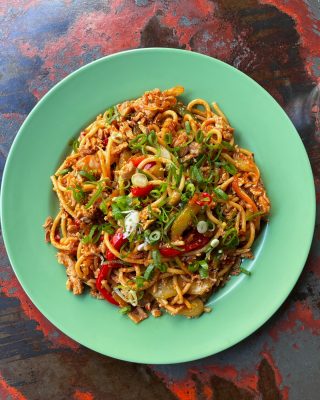 Pin
Pin Photo by The Hood Paris
Now we find ourselves in the bustling night markets of Indonesia and Malaysia, where the air fills with smoke from countless woks and the sound of metal spatulas clanging against hot steel creates a symphony that means dinner is being prepared. Mee goreng, which simply means “fried noodles” in Malay, represents one of those beautiful examples of how a dish can evolve when multiple cultures share the same streets and cooking fires.
The noodles themselves came from Chinese immigrants, but Indonesian and Malay cooks transformed them into something distinctly their own by adding sweet soy sauce called kecap manis, a thick, molasses-like condiment that gives the dish its characteristic dark color and a sweetness that dances alongside savory, spicy, and tangy notes in a way that shouldn’t work but absolutely does.
What makes mee goreng particularly fascinating is how it breaks all the rules that other stir-fried noodle dishes follow, yet somehow emerges triumphant despite its rebellious nature. Most stir-fries aim for a certain elegance and restraint, but mee goreng enthusiastically throws everything into the wok with abandon. You start with yellow wheat noodles, the kind with a slightly alkaline taste from added lye water, which get stir-fried with garlic, shallots, and perhaps some dried shrimp paste called belacan that provides a pungent, funky foundation. Then comes eggs scrambled directly into the noodles, potatoes cut into chunks and fried until crispy, tofu, vegetables, and whatever protein strikes your fancy, whether shrimp, chicken, or simply more eggs. The sweet soy sauce coats everything in a glossy sheen while chili paste adds heat, and the whole glorious mess gets topped with fried shallots, a squeeze of lime, and sometimes a fried egg perched on top like a crown. Street vendors across Southeast Asia have their own particular versions, each one slightly different, and locals will argue passionately about whose mee goreng reigns supreme, though really the best one is whichever steaming plate happens to be sitting in front of you at that particular moment.
15. Khao Soi – Northern Thailand's Curry Noodle Crown
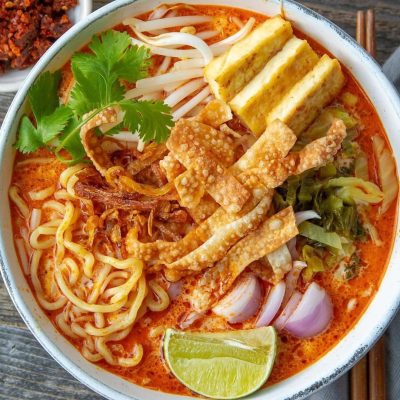 Pin
Pin Photo by WooHeng Chia
Let me tell you about a dish that demonstrates what happens when Thai, Burmese, and Chinese culinary traditions meet in the mountainous regions of northern Thailand and decide to create something magical together. Khao soi emerged in Chiang Mai and the surrounding areas, likely brought by Muslim Chinese traders traveling the ancient caravan routes from Yunnan province. What makes this curry noodle soup particularly intriguing is its double personality with noodles, because you get both soft boiled noodles swimming in the curry and crispy fried noodles perched on top like a crunchy golden crown.
This textural contrast between silky and crispy, all in the same bowl, creates an experience that keeps you coming back for another spoonful, then another, as you chase that perfect bite where soft and crispy meet in harmonious collision.
The curry itself tells a complex story through its layers of flavor, beginning with a spice paste that typically includes dried red chilies, shallots, garlic, lemongrass, galangal, coriander root, and turmeric, all pounded together until they release their aromatic oils and form a fragrant foundation. This paste gets fried in oil until it blooms and mellows, then coconut milk joins the party in two stages, first the thick cream to create richness, followed by thinner milk to achieve the right consistency. Palm sugar and fish sauce balance sweet and salty, while a touch of curry powder adds warmth without overwhelming heat. The traditional protein is chicken, though some versions use beef, and the meat simmers in the curry until it becomes fall-apart tender. Fresh egg noodles get boiled separately and divided between bowls, half staying soft while the other half gets deep-fried until it shatters satisfyingly under your spoon. Pickled mustard greens, shallots, lime wedges, and chili oil arrive on the side, allowing each person to customize their bowl. The dish manages to be simultaneously comforting and exciting, familiar yet exotic, proving that sometimes the most memorable flavors emerge when cultures blend rather than remaining separate.
16. Cacio e Pepe – Rome's Three-Ingredient Masterclass
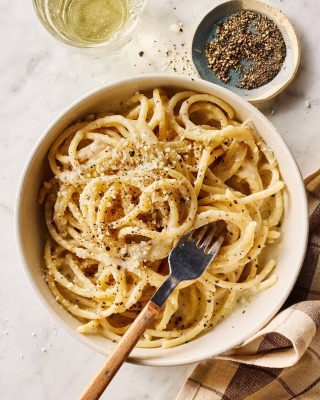 Pin
Pin Photo by Jeanine Donofrio
Here’s where we encounter something that appears deceptively simple on the surface, rather like a magic trick performed with only three ordinary items that somehow produces extraordinary results. Cacio e pepe, which translates to “cheese and pepper,” has been sustaining Roman shepherds for centuries with nothing more than dried pasta, aged Pecorino Romano cheese, and coarsely ground black pepper.
The dish supposedly originated in the hills surrounding Rome, where shepherds needed meals they could prepare with ingredients that wouldn’t spoil during long periods away from home. What seems like the easiest pasta dish in existence actually requires such precise technique that even experienced cooks sometimes find themselves staring down at a clumpy, greasy mess instead of the silky, glossy sauce they were hoping to achieve.
The entire challenge of cacio e pepe revolves around creating a creamy sauce from ingredients that naturally resist becoming creamy, which requires understanding the science of emulsification in a way that feels more like alchemy than cooking. You must save some starchy pasta water before draining your spaghetti or tonnarelli, because this cloudy liquid contains dissolved starch that acts as a binding agent between the cheese and water, preventing them from separating into an oily puddle. The pepper gets toasted in a dry pan first to awaken its aromatic oils, then the hot pasta goes in along with a small amount of pasta water. Off the heat, because this is crucial, you gradually add finely grated Pecorino while tossing vigorously, the residual heat melting the cheese while the starch holds everything in suspension. Too much heat and the cheese turns stringy and greasy, too little and it remains grainy and refuses to melt properly. When everything aligns perfectly, you get sauce that coats each strand in a creamy, peppery embrace that tastes far more complex than three ingredients have any right to taste, proving that sometimes the greatest sophistication lies in restraint rather than abundance.
17. Pappardelle al Ragù – Tuscany's Wide Ribbon of Comfort
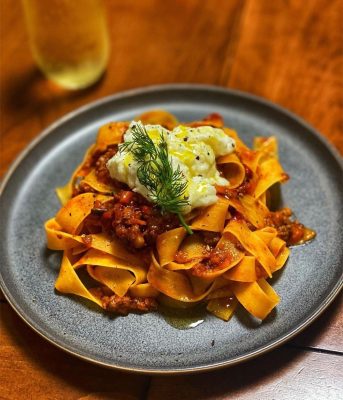 Pin
Pin Photo by Fresco Pasta
Now we arrive at a pairing so harmonious that separating the two elements would be rather like trying to discuss thunder without mentioning lightning. Pappardelle, those gloriously wide ribbon noodles that can stretch nearly an inch across, were practically designed by fate itself to cradle rich, meaty ragù sauces that would slip right off thinner pasta. The name comes from the Italian verb “pappare,” meaning to gobble up or devour with enthusiasm, which tells you everything you need to know about how Tuscans feel about this particular pasta.
While Bologna claims fame for its ragù with tagliatelle, Tuscany developed its own rustic version using wild boar, rabbit, or sometimes duck, creating sauces that taste like the forested hillsides where these animals roam freely.
The beauty of pappardelle lies not just in its width but in its texture, because properly made fresh pappardelle possesses a substantial chew that stands up to long-simmered sauces without dissolving into mush. The dough requires more eggs than typical pasta, sometimes as many as ten yolks per kilogram of flour, which gives the noodles their rich golden color and tender bite. Rolling the dough thin enough requires patience and a certain feel that comes from practice, then cutting it into those wide ribbons demands a steady hand to keep them uniform. The ragù that accompanies pappardelle in Tuscany typically begins with a soffritto of onions, carrots, and celery cooked low and slow until they surrender their sweetness, followed by chunks of meat that brown deeply before red wine and tomatoes join to create a sauce that simmers for hours. The long cooking time transforms tough cuts into something that falls apart at the gentlest prodding, while the flavors concentrate and deepen into something that tastes like pure comfort. When you twirl these wide noodles around your fork, they capture pools of sauce in their folds and curves, delivering the perfect ratio of pasta to ragù in every single bite, which is precisely what makes this combination so utterly satisfying and why Tuscans have been making it the same way for generations.
18. Dan Dan Noodles – Sichuan's Spicy, Nutty Street Food Legend
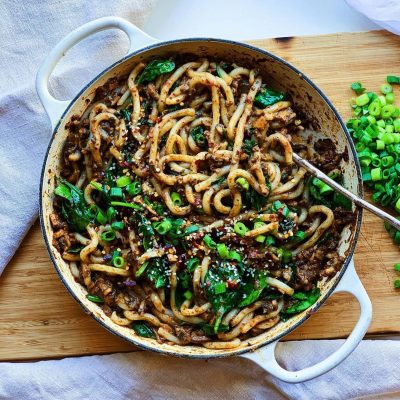 Pin
Pin Photo by Alex’s Kitchen Story
Let’s wander into the spicy heartland of Sichuan province, where a dish emerged from the most humble of origins to become one of China’s most beloved noodle preparations. Dan dan noodles get their peculiar name from the bamboo poles, called dan dan, that street vendors once balanced across their shoulders, with cooking equipment dangling from one end and noodles and toppings from the other. These walking restaurants would traverse the streets of Chengdu calling out to attract customers, preparing fresh bowls on the spot for workers and passersby who needed a quick, inexpensive meal.
The dish perfectly embodies the Sichuanese philosophy of flavor layering, where multiple taste sensations hit your palate simultaneously, creating what the Chinese call mala, that addictive combination of numbing and spicy that comes from Sichuan peppercorns meeting chili oil.
The traditional version involves surprisingly little actual broth, more of a thick, intensely flavored sauce that clings to thin wheat noodles with an almost desperate enthusiasm. You begin by preparing ya cai, a type of preserved mustard green that provides a crucial salty, slightly sour backbone, then fry minced pork or sometimes just pork fat until it becomes deeply caramelized and crispy at the edges. The sauce itself combines Chinese sesame paste, soy sauce, black vinegar, chili oil loaded with sediment for extra heat, and crucially, ground roasted Sichuan peppercorns that provide that distinctive tingling numbness on your tongue. Some versions add a small amount of stock to loosen the sauce slightly, but authentic dan dan noodles remain fairly dry compared to soupy noodle dishes, allowing the complex flavors to concentrate rather than dilute. Garlic, ginger, and scallions provide aromatic support, while a handful of blanched pea shoots or bok choy adds a fresh counterpoint to all that richness. The first bite might make your lips tingle alarmingly, but by the third or fourth mouthful, you’ll find yourself completely under the spell of that magical mala sensation, understanding exactly why this humble street food has conquered hearts far beyond Sichuan’s borders.
19. Singaporean Hokkien Mee – The Island's Smoky Seafood Symphony
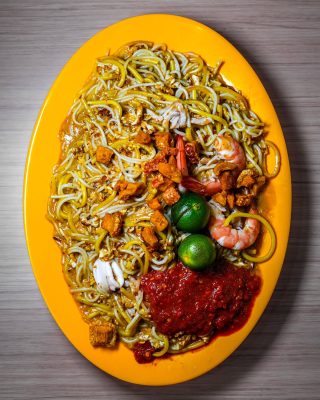 Pin
Pin Photo by Han Rui
Now we must address a rather confusing situation, because if you order Hokkien mee in Singapore versus Malaysia, you’ll receive two completely different dishes, which has caused no small amount of bewilderment among travelers and food enthusiasts. The Singaporean version, which we’re discussing here, involves thick yellow noodles and rice vermicelli stir-fried together with prawns, squid, and pork belly in a rich, dark sauce that gets its depth from prawn stock reduced until it becomes almost syrupy.
The dish traces its roots to the Hokkien Chinese immigrants who arrived in Singapore during the nineteenth century, bringing their noodle-making traditions and adapting them to the abundant seafood available in their new island home. What emerged was something that honored their heritage while embracing their new reality, which is rather how most immigrant cuisines evolve when they plant roots in foreign soil.
The secret to extraordinary Hokkien mee lies in building layers of flavor through a technique that requires both patience and intense heat applied at precisely the right moments. You must first make a stock by simmering prawn heads and shells for at least an hour, extracting every molecule of sweet, briny flavor until the liquid turns amber and tastes like the essence of the sea itself. Meanwhile, pork belly gets fried until its fat renders and the meat becomes crispy, followed by garlic that sizzles until golden and fragrant. The two types of noodles go into the screaming hot wok next, along with prawns and squid that cook just until they turn opaque and tender. Then comes that concentrated prawn stock, which steams and reduces around the noodles, coating them in a glossy sauce while creating billows of aromatic steam. Bean sprouts, Chinese chives, and sometimes a raw egg stirred in at the end add freshness and richness respectively. The finished dish should have visible char marks on some noodles from contact with the blazing wok, that precious wok hei we discussed earlier, while remaining moist and flavorful rather than dry. A squeeze of calamansi lime and a dollop of sambal belacan on the side complete the experience, creating something that tastes simultaneously familiar and exciting, comforting yet bold enough to wake up every taste bud you possess.
20. Char Kway Teow – Malaysia's Wok-Charred Street Food Royalty
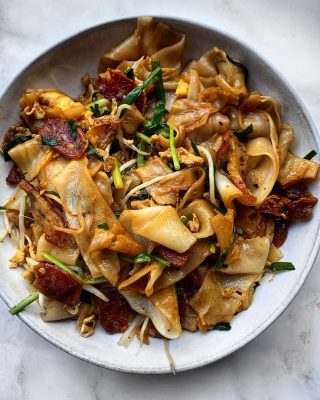 Pin
Pin Photo by Chinese Food Obsession
We’ve reached our final destination in this curious noodle journey, and what better place to conclude than with a dish that embodies everything thrilling about street food cooked over roaring flames. Char kway teow, which translates to “stir-fried rice cake strips,” represents one of Malaysia and Singapore’s most beloved hawker dishes, the kind that locals will travel across town for when they find a vendor who makes it just right. The dish emerged from the Chinese immigrant communities in Southeast Asia, likely created by Teochew and Hokkien settlers who adapted their traditional cooking methods to the ingredients available in their new tropical home.
What started as humble sustenance for dock workers and laborers eventually became so popular that it transcended its working-class origins to become something almost everyone craves, regardless of social station.
The soul of char kway teow lies in its contrast between sweet and savory, with an underlying smokiness that comes from cooking over intense heat that borders on dangerous. You need flat rice noodles similar to those used in beef chow fun, but here they get stir-fried with dark soy sauce, light soy sauce, and sometimes a touch of sweet sauce that caramelizes against the hot wok. Fresh prawns, Chinese lap cheong sausage sliced thin, cockles or clams, bean sprouts, and garlic chives all tumble together in the wok, each ingredient contributing its particular character to the whole. The controversial ingredient is pork lard, which traditional vendors use generously because it provides an incomparable richness and helps achieve those coveted charred bits called wok hei. An egg gets cracked directly into the wok and scrambled among the noodles, binding everything together while adding silkiness. The best versions have visible char on the noodles, those dark, slightly crispy edges that taste faintly of smoke and prove the cook wasn’t afraid to let things get properly hot. Each mouthful delivers different textures and flavors, the sweet sausage against briny seafood, soft noodles against crunchy sprouts, all unified by that intoxicating smoky essence that makes char kway teow one of those dishes you dream about long after you’ve finished eating, already planning when you might have it again.
FAQs
Use high heat, plenty of oil, and gentle folding motions rather than stirring. Fresh noodles work better than dried ones that have been soaked.
Commercial woks produce much higher heat than home stoves, creating that smoky wok hei flavor. Restaurant-grade burners reach temperatures home equipment cannot match.
Absolutely! A rolling pin and patience work perfectly. Italian grandmothers did it for centuries. The dough just needs proper kneading and resting time.
Alkaline water gives noodles a springy texture and slightly yellow color. It’s traditional in ramen and some Chinese noodles, affecting both taste and chew.
Fresh pasta keeps for two to three days when dusted with flour and stored in an airtight container. Freeze for longer storage, up to three months.




